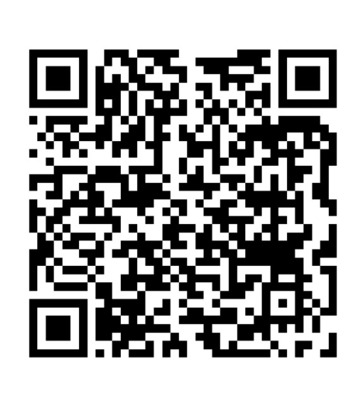Here are the common tools that are used during the project.
This page is prepared by Sandra Vasconcelos and Nihal Köroğlu Çevik.
Here are the Web 2.0 tools used during the project:
1) Students’ presentation
It was done with PADLET: https://padlet.com/maricapetillo/hhqoqpz6sjxpxwwl
To start our project, we have made a Padlet where the students could present themselves to others.
2) Project Logo
It was made with TRICIDER: https://www.tricider.com/admin/3BhgmXCVhfR/daEWmnoUCf
Tricider is a tool that permits a group of people to vote for something. Here, a few partners created a project logo that was submitted for voting. The most voted was selected to be our project logo.
3) Celebrating the European Day of Languages
It was done with PADLET: https://padlet.com/etwinninglanguagesall/jxz0va9yaq6v8dgb
Across all Europe is celebrated the European Day of Languages. As our project is maned L@ngu@ges4all!, we thought it to be a good idea to promote the language diversity involved in this project.
4) Saying Hello video
Used tool YOUTUBE: https://www.youtube.com/watch?v=Z2IRRxLXGgw
This video was the first compliment from our students across all Europe and involved countries, so our students could learn the different ways to say HELLO.
5) Collaborative dictionary
It was done using GOOGLE DOCS: https://docs.google.com/presentation/d/1oxMqfE5dr9AZe31m-nJGMxM1Gd8OMqfustZX_OoEKXc/edit#slide=id.p
This dictionary was made with the collaboration of the partners, and its aims to focus on linguistic diversity and its importance.
6) Meeting video of our students in their native language
It was done using OURBOOX.COM: https://www.ourboox.com/books/lnguges4all-multilingual-library/
This tool is excellent to create e-books. With this tool, we have created an e-book using some videos from our students in their native language and English, the common language. The sentences used were previously written in a common chart by all partners.
7) Meeting video of our students in partner's native language
It was done using OURBOOX.COM: https://www.ourboox.com/books/lnguges4all-multilingual-library-2/
It was created an e-book using some videos from our students in their native language and other languages, such as French or Turkish, for example. The sentences used were previously written in a common chart by all partners.
8) Decorating a Collaborative New Year Tree
It was done using VIEW.GENIAL.LY: https://view.genial.ly/5fb7b4150892be0d1e16536d/interactive-image-lnguges4all
Christmas is not celebrated in the same way everywhere. But one thing is certain, there are many countries that decorate their Christmas trees.
So we decided to share an online Christmas tree with all partner's participation.
9) OUR CHRISTMAS TRADITIONS
It was done USING GOOGLE DOCS: https://docs.google.com/presentation/d/1e26Vo8AGqlSYMrHs_Qz-a32LjzsDRKLdm5RfNVCz83w/edit#slide=id.p
Not only languages are important, but also is important to think and respect the countries traditions.
We proposed our students share their Christmas traditions with their partners.
10) Different sign languages (in our students’ native sign language)
It was done using OURBOOX.COM: https://www.ourboox.com/books/hands-that-speak-i/
There is also a language that is not widely used: sign language. Sign language is a way of communication by using hands and other parts of our body. We all thought it was important to share with our students this way of communication.
11) Sign languages dictionaries in several languages
It was done using OURBOOX.COM: https://www.ourboox.com/books/sign-language/
Trying to understand if all Sign languages are the same, we challenged our students to go further and share how is the sign language all over Europe and neighboring countries.
12) e-Safety day
Was made using LINOIT.COM: https://linoit.com/session/login?redirect=http%3A%2F%2Flinoit.com%2Fusers%2Flanguages4all%2Fcanvases%2FL%2540NGU%2540GES4ALL%2520posters%2520
Security is a very serious issue these days. And even more when we talk about surfing the internet.
The partners decided to share rules of netiquette with their students.
13) Tongue Twister in Native Language
Was made using PADLET: https://padlet.com/perihanz989/m63kjpx912pztxpz
Who says that learn foreign languages is easy. Try to say some of these native tongue twisters.
14) Tongue Twister in Partners' language
Was made using PADLET: https://padlet.com/perihanz989/Bookmarks
What an amusing way to learn foreign languages… We have learned some Tongue twisters with our partners.
15) Creating a collaborative game
Was made using QUIZIZZ.COM: https://quizizz.com/admin/quiz/60a26f813adaa3001eb03ae6/l-ngu-ges-all
Now that we already know some words and sentences, what about trying and see what we have learned with a quiz?
16) Editing collaborative game
It was done using GOOGLE DOCS: https://docs.google.com/spreadsheets/d/1LP_8gjLtGyzWJlJsDq8wSfRMRSvenaG6P8rUGGz9Quw/edit#gid=0
All students were able to suggest questions and respective answers in the collaborative game.
17) e-Twinning day, May 9th
It was done using MOSAICALLY.COM: https://mosaically.com/photomosaic/c5f55290-1001-413b-8b43-d17812f57cee
Every partner was able to participate in the creation of a mosaic with their students' photos, avatars, or works.
18) Final Products
It was done using GOOGLE DOCS (links listed below)
Part of the interaction when in a foreign country is to know how to as for directions, go shopping or a restaurant. Students worked as mixed teams to write the words in their native language.
Going shopping
https://docs.google.com/document/d/1qDyWRVJvN-buq3NaDO0T7lEKXOcZXuOcnr0fIOvynFQ/edit
Basic Verbs
https://docs.google.com/document/d/1c2JG9BqoiioPaGDmo-wB8ATiJr6EWSloxZnAKI8kVbQ/edit
Different dishes
https://docs.google.com/document/d/1-vZzKxzf5n4PEkOKtnKmpYFEthwdmZluUih9mUm1JNk/edit
Class equipment and stationeries
https://docs.google.com/document/d/15s8pD-LzgT_TQqFYx60-1tVQnB3QK0RuK3dSB8f45zg/edit
Kinship Terms
https://docs.google.com/document/d/1SRBgRhJkjyp_5vagabikbKDy4Emv1K3Ge1dCOyfaGnM/edit
Asking and answering directions
https://docs.google.com/document/d/1IoLpnspL2zYrGlSsbnCvolLMO8qdYzOjNvGGr5JMg2o/edit
Vegetables and fruits
https://docs.google.com/document/d/1f3B35jFtsOUHXm8fVY7SAU0Hu3zbU-sEdJ7L5kSpRxE/edit
Knowing you
https://docs.google.com/document/d/1DWsulOldS8FpKUTSyIOLeMTvu6HEJv83yTM-TL35lfA/edit
Greetings
https://docs.google.com/document/d/1h2izbweJotWjYtrzU46NZ4nlyAu9Dp_t3aNYVu0ghMA/edit
Universal values
https://docs.google.com/document/d/1V2cOpUxlR1AkCZ_uREkGqbYidUF_vZd8zySIthU0fvM/edit
MULTILINGUAL DICTIONARY via Flipsnack
https://www.flipsnack.com/nurcan5581/l-ngu-ges4all-etwinning-project.html
19) Project Map
It was done using GOOGLE: https://www.google.com/maps/d/u/0/viewer?mid=1NxhRpH3gW4zGTNSvJS_ZjlsgOCD0i7Sb&ll=38.12244859381264%2C-3.6146701435474187&z=6
On this map, we can find every partner of this project.
20) Third online meeting (closing webinar)
Done, using ZOOM: https://twinspace.etwinning.net/118203/pages/page/1691470
To end our project, teachers meet for the last time to make a balance of the project.
Here is the link for our project collaborative links.
Collaborative links
Here is the QR Code for quick reach.
